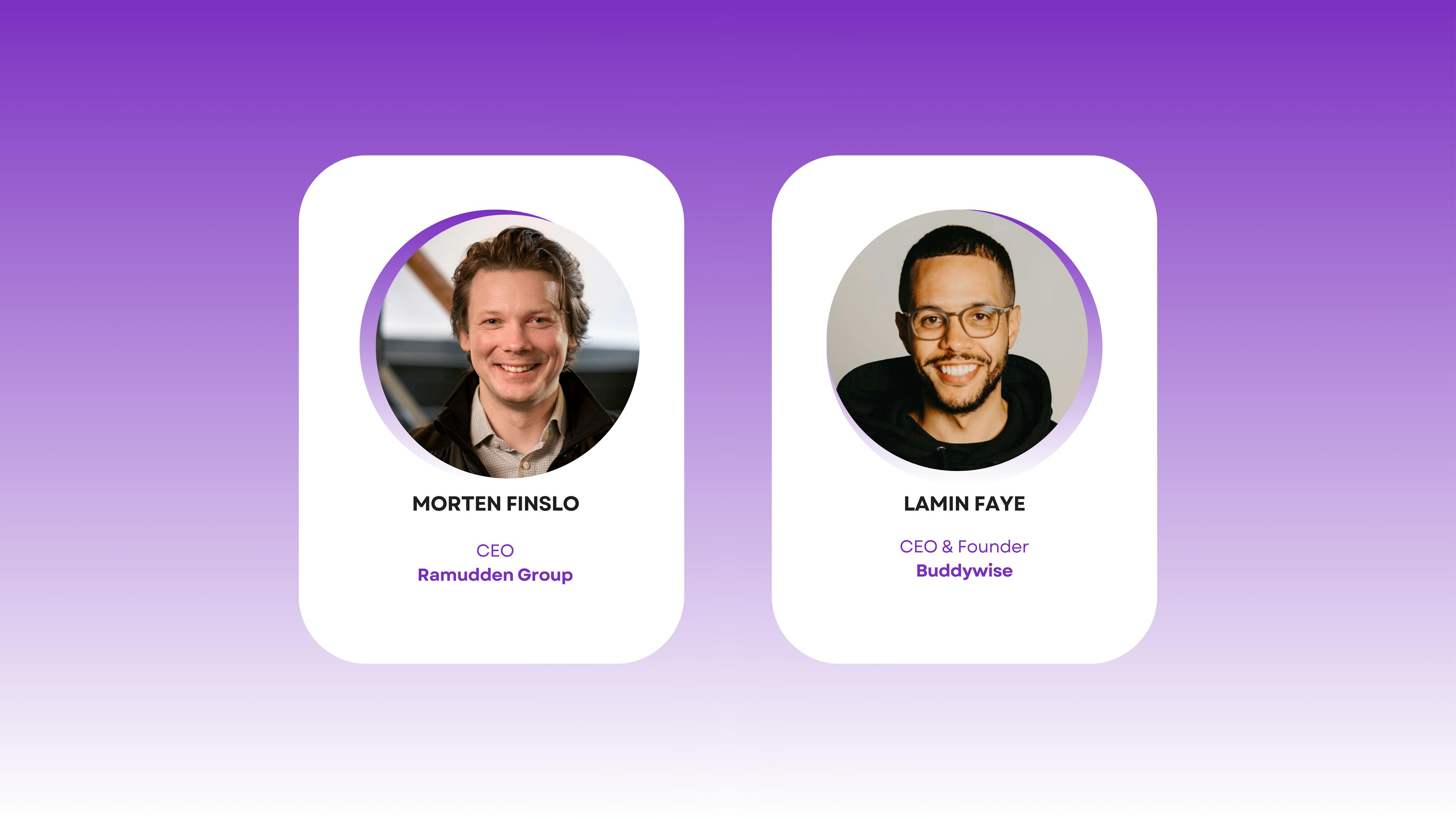View Webinar Recording
View our webinar recording from December 5th 2024 where we talk with Ramudden Group's CEO Morten Finslo about how Ramudden utalizes AI & Computer Vision to enhance infrastructure safety
Length: 45 minutes
Click to view the webinar recording
Infrastructure safety is at a crossroads. Serious accidents are often just the visible tip of an iceberg of unseen near misses and unsafe acts. Addressing these early can prevent major incidents, but traditional safety methods fall short.
In a recent webinar, Lamin Faye, our CEO and Founder of Buddywise, sat down with Morten Finslo, CEO of Ramudden Group, to explore how Ramudden is using AI and computer vision to redefine infrastructure safety.
At Buddywise, we specialize in AI-powered safety technology solutions. Over the past year, we’ve partnered with Ramudden—a global leader in infrastructure safety solutions—to tackle this iceberg challenge. Together, we aim to enhance site safety for Ramudden and its customers through a mix of cutting-edge digital tools and deep field expertise.
Ramudden at a glance
- Founded in 2005
- Operates across 5 Nordic countries with 1,500+ employees.
- Expanded globally in 2022; serves 12 countries, handling ~3,000 live projects at any time.
- Mission: "Get everyone home safely every day."
Worldwide construction is one of the most dangerous industries, with 51 fatal accidents and 4,000 non-fatal injuries reported in the UK alone last year. The real numbers could be up to 10 times higher, but most incidents go unreported. Manual safety management simply isn’t enough. Risks like missing PPE, unsafe vehicle operations, and near-miss incidents often slip through the cracks. Ramudden recognized the need for smarter and more sustainable ways to manage safety that could have the potential to be rolled out at its 3,000+ active unique site projects.
Existing industry challenges
Morten highlighted four critical safety challenges facing the infrastructure industry, particularly in construction:
1. Urbanization and Increased Traffic Density
The growing density and urbanization of cities have led to an increase in high-risk situations, especially during traffic disruptions. These pressures have created a heightened demand for protection services to ensure safety in traffic conditions.
2. Standards for physical safety
Despite stricter safety standards introduced over the past decade, urbanization has intensified challenges, with road workers often reporting feeling less safe—both physically and psychologically.
3. Lack of Data-Driven Safety Decision-Making
Safety decisions in the infrastructure sector remain largely anecdotal due to limited accident reporting, as most site inspections are still manual, and effective learning systems are lacking.
4. Decentralized Decision-Making
The construction industry's project-based nature results in decentralized decision-making, making it difficult to enforce compliance or implement new technologies consistently. Each construction site is unique, involving various contractors and organizations, which adds to the complexity.
From mixed worker feelings to felt benefits
When Ramudden introduced Buddywise's technology to select sites, the initial response from stakeholders—especially workers—was mixed. Privacy concerns were common, as cameras are often perceived as surveillance tools. However, these concerns quickly eased once workers experienced the technology’s benefits:
Real-Time Alerts
Workers appreciated receiving instant feedback on zone intrusions and unsafe practices, which improved their confidence in workplace safety.
Proactive Safety Measures
By identifying and addressing previously unnoticed risks, workers saw a recognizable reduction in hazards before incidents occurred, fostering a safer work environment.
Empowered Teams
Site managers found value in the WebApp's dashboard, which provided actionable data and insights. As a tool it enabled them to make informed decisions and respond quickly to on-site challenges.
Addressing Staffing Challenges
With the ongoing difficulty of hiring qualified staff, the technology helped bridge the gap by enhancing the productivity of existing teams.
The combination of real-time monitoring, actionable analytics, and proactive risk mitigation has been recognized as a major leap forward, benefiting all stakeholders and elevating safety standards across worksites.
AI won’t replace jobs, but redefine roles
The media often portrays AI as a job killer, but Morten disagrees, AI isn’t about eliminating jobs; it’s about redefining roles. However, its potential can only be realized through investment and cross-industry collaboration.
Ramudden and Buddywise share a common mission: keeping people safe at work. Morten is optimistic about AI’s future as a "safety co-pilot." Cameras and AI are already detecting real-time risks, such as deviations from traffic control plans, enabling remote monitoring from a laptop. This reduces the need for constant on-site supervision while enhancing safety.
As AI evolves, adding predictive capabilities will help HSE and site managers proactively address risks. Morten envisions this technology being rolled out across all sites, where data collected from thousands of locations will not only improve the software algorithm but also empower Ramudden’s teams to provide smarter safety advice to their clients.
The ultimate goal is a “zero vision” future—zero injuries and zero accidents. Achieving this requires more than just reacting to incidents; it demands preventing them entirely. With advancements in connectivity and computing power, even remote sites will soon benefit from smart cameras, giving teams a comprehensive view to ensure safety.
For construction and infrastructure companies, the message is clear: safety starts now. With the right tools and partners, you can identify and mitigate risks before they happen.
Subscribe to our newsletter
To stay up to date with our happenings and receive invites to our webinars please subscribe to our newsletter.
